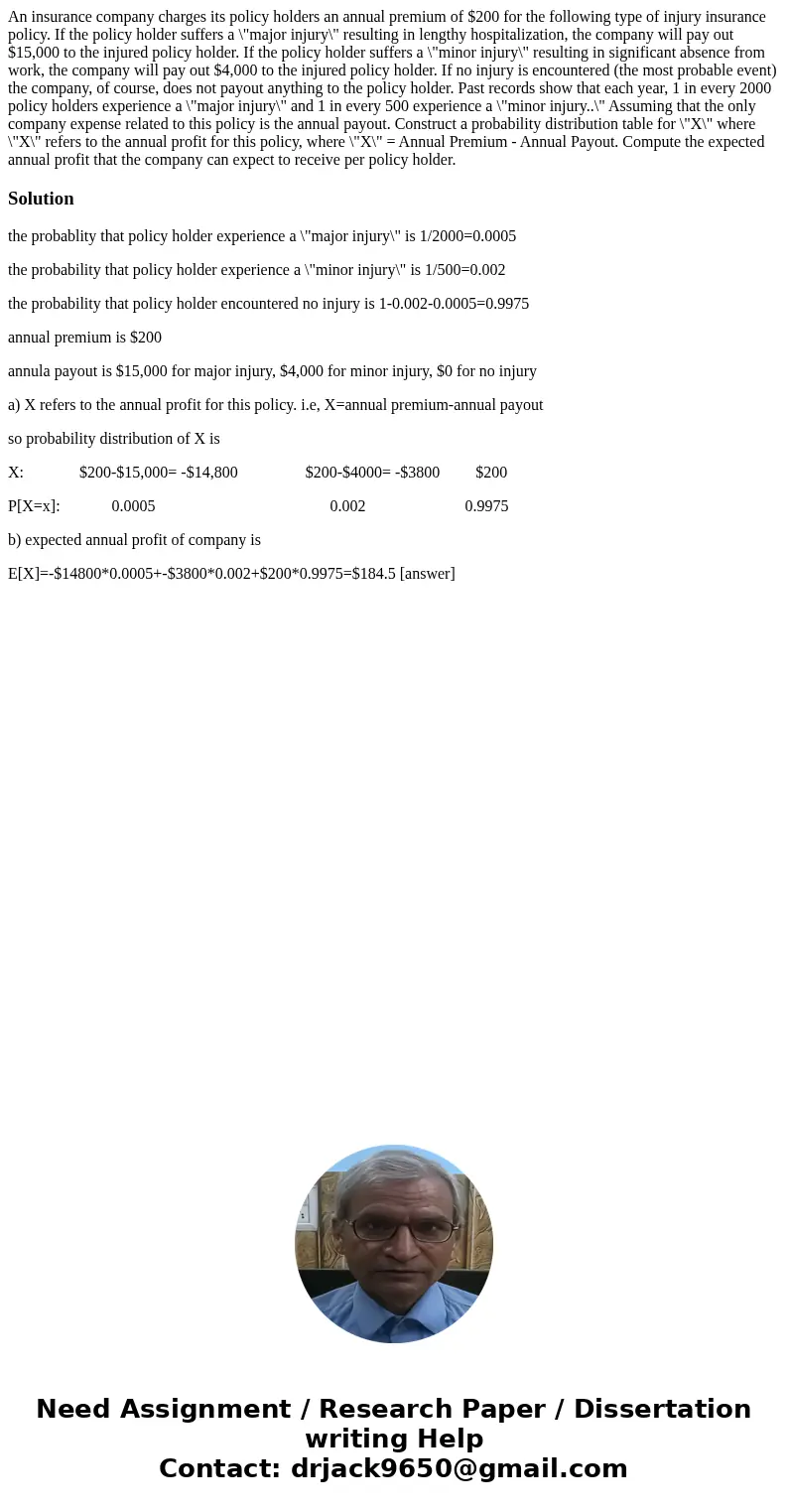An insurance company charges its policy holders an annual premium of $200 for the following type of injury insurance policy. If the policy holder suffers a \"major injury\" resulting in lengthy hospitalization, the company will pay out $15,000 to the injured policy holder. If the policy holder suffers a \"minor injury\" resulting in significant absence from work, the company will pay out $4,000 to the injured policy holder. If no injury is encountered (the most probable event) the company, of course, does not payout anything to the policy holder. Past records show that each year, 1 in every 2000 policy holders experience a \"major injury\" and 1 in every 500 experience a \"minor injury..\" Assuming that the only company expense related to this policy is the annual payout. Construct a probability distribution table for \"X\" where \"X\" refers to the annual profit for this policy, where \"X\" = Annual Premium - Annual Payout. Compute the expected annual profit that the company can expect to receive per policy holder.
the probablity that policy holder experience a \"major injury\" is 1/2000=0.0005
the probability that policy holder experience a \"minor injury\" is 1/500=0.002
the probability that policy holder encountered no injury is 1-0.002-0.0005=0.9975
annual premium is $200
annula payout is $15,000 for major injury, $4,000 for minor injury, $0 for no injury
a) X refers to the annual profit for this policy. i.e, X=annual premium-annual payout
so probability distribution of X is
X: $200-$15,000= -$14,800 $200-$4000= -$3800 $200
P[X=x]: 0.0005 0.002 0.9975
b) expected annual profit of company is
E[X]=-$14800*0.0005+-$3800*0.002+$200*0.9975=$184.5 [answer]

 Homework Sourse
Homework Sourse